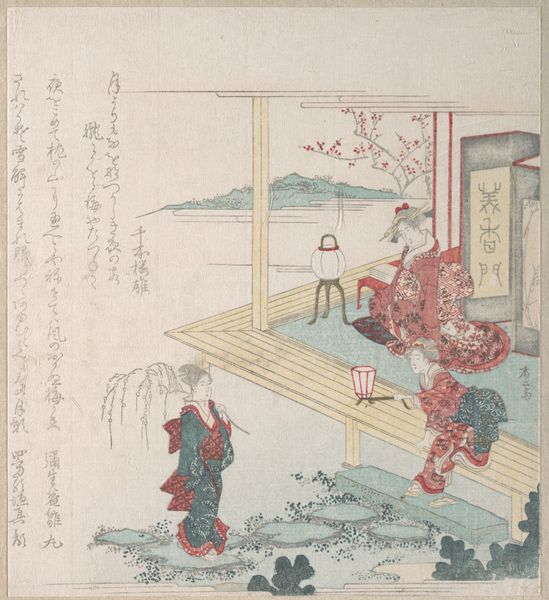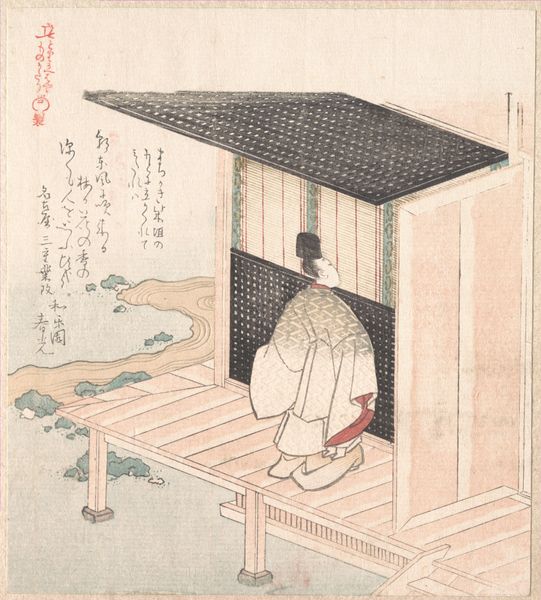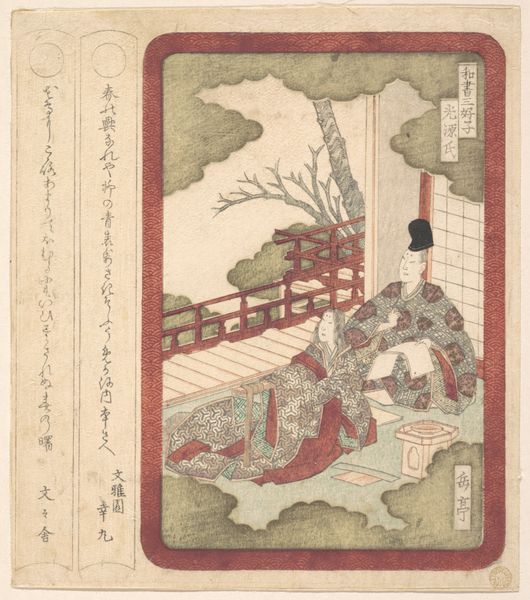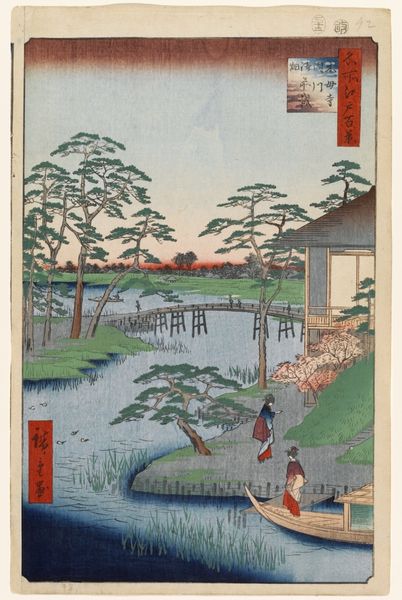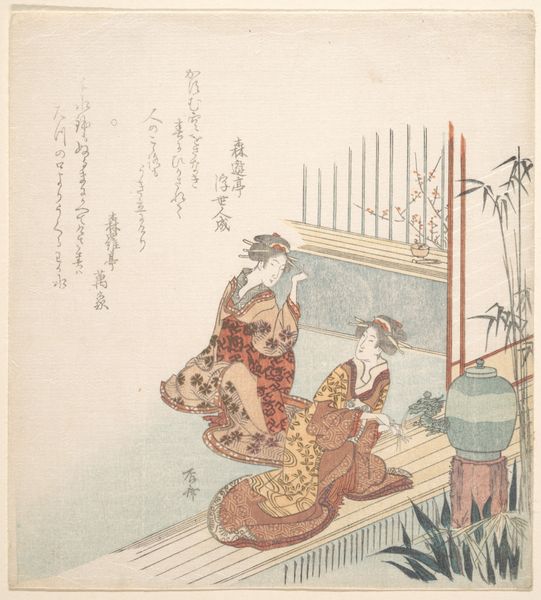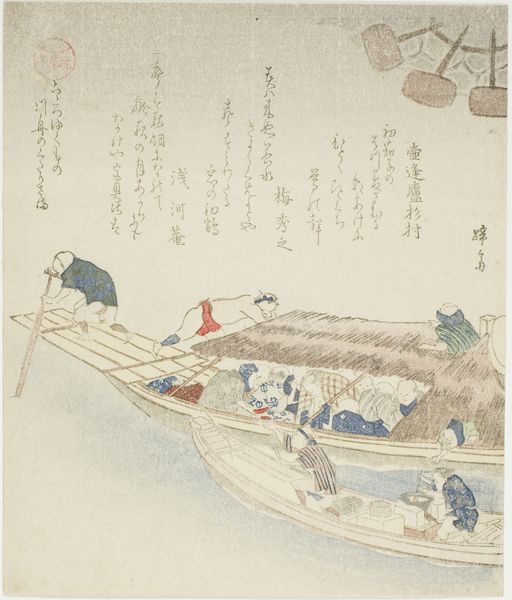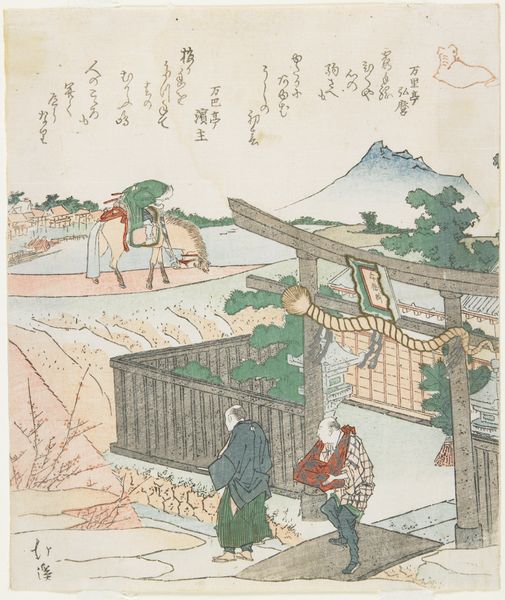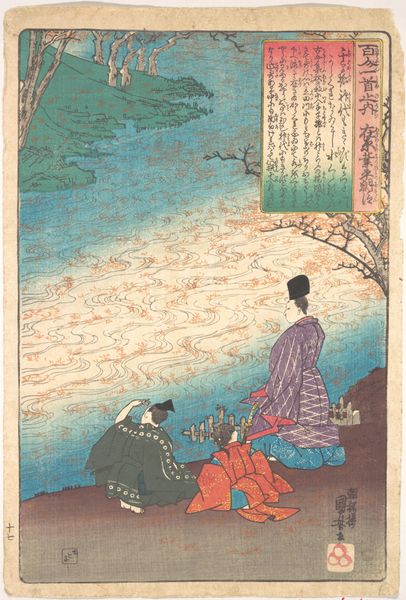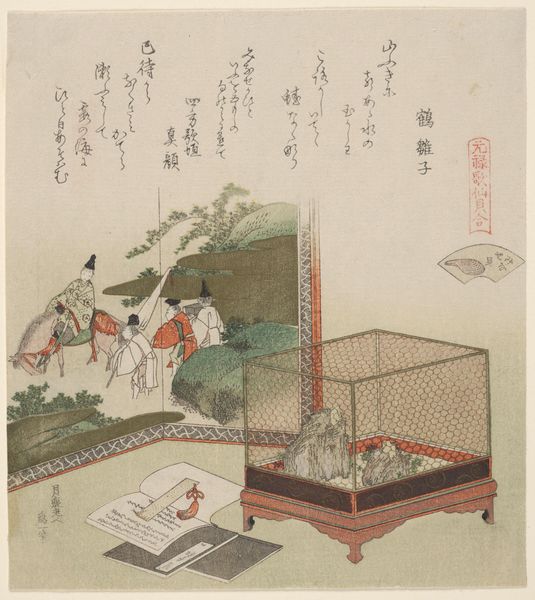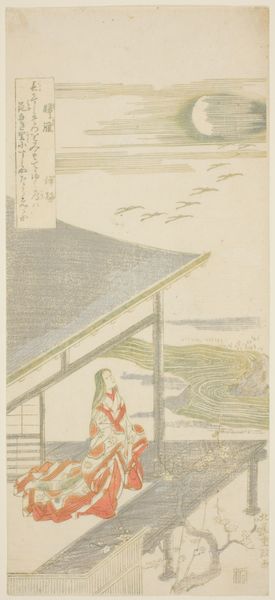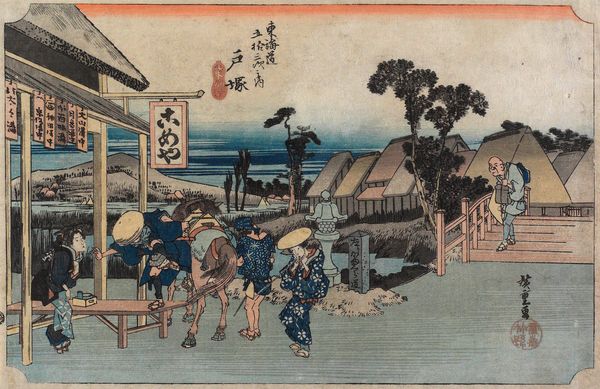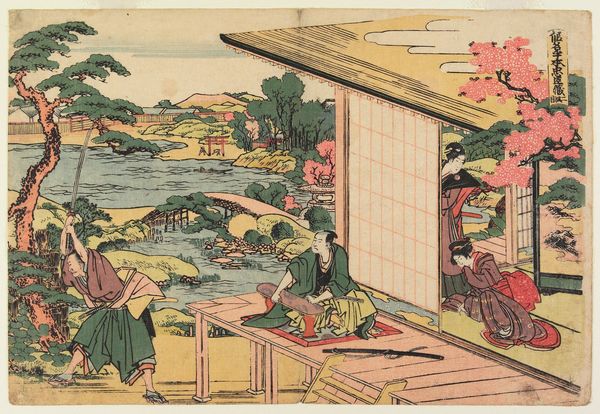
Samurai Admiring Pine-Tree and Plum Blossoms 1750 - 1835
0:00
0:00
tempera, print
#
tempera
# print
#
human-figures
#
asian-art
#
landscape
#
ukiyo-e
#
japan
#
figuration
#
genre-painting
Dimensions: 5 5/8 x 3 7/8 in. (14.3 x 9.8 cm)
Copyright: Public Domain
Curator: Welcome. Before us hangs Ryūryūkyo Shinsai's “Samurai Admiring Pine-Tree and Plum Blossoms,” a tempera print from the late 18th or early 19th century. It’s currently held here at the Metropolitan Museum of Art. Editor: Ah, yes. It’s immediately striking; it almost feels like peeking into a very quiet, intimate moment. The colors are so muted, delicate… almost faded, like an old memory. And that perfectly placed branch of plum blossoms, right in the foreground – breathtaking. Curator: Shinsai was a master of the surimono print, a genre often commissioned by poetry clubs or for special occasions. This work exemplifies that style: an idyllic scene framing cultural pursuits and celebrating seasonal motifs. Note the refined details of the interior architecture and the flowing stream in the landscape, all under a blanket of soft hues. Editor: It's interesting, isn't it, the way the architectural lines frame the nature outside, almost making the outdoor landscape an art piece inside a frame of its own? And there’s this feeling of respect; a samurai presented with a delicate flowering tree? It's all beautifully strange in its elegance, so contradictory. A juxtaposition I would never have dreamed up! Curator: Absolutely. The samurai's apparent contemplation connects to Bushido and Confucian values. These celebrated restraint, culture and artistic skill and how it can enrich a ruler and, by extension, their country. It shows how power could value poetry and small works. Editor: It almost turns the traditional warrior archetype on its head! You almost expect some grand, sweeping battle scene, and you’re instead gifted a gentle encounter with nature. It highlights this softer side of the samurai spirit. It really shifts my own expectations. Curator: It invites us to reassess common perceptions of historical figures, questioning simple binary representations of figures like samurai and presenting an alternate version, with human nuances of appreciation of peace and serenity. Editor: That’s such a beautiful, reflective way to conclude. Thanks, the world truly feels transformed after pondering that little world of delicate beauty and reflection. Curator: A true testament to how even historical reflection transforms how we view and portray it and how art shifts views on power.
Comments
No comments
Be the first to comment and join the conversation on the ultimate creative platform.
